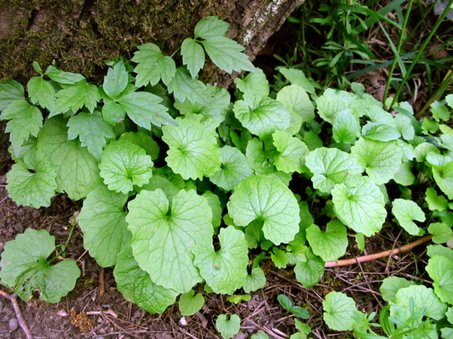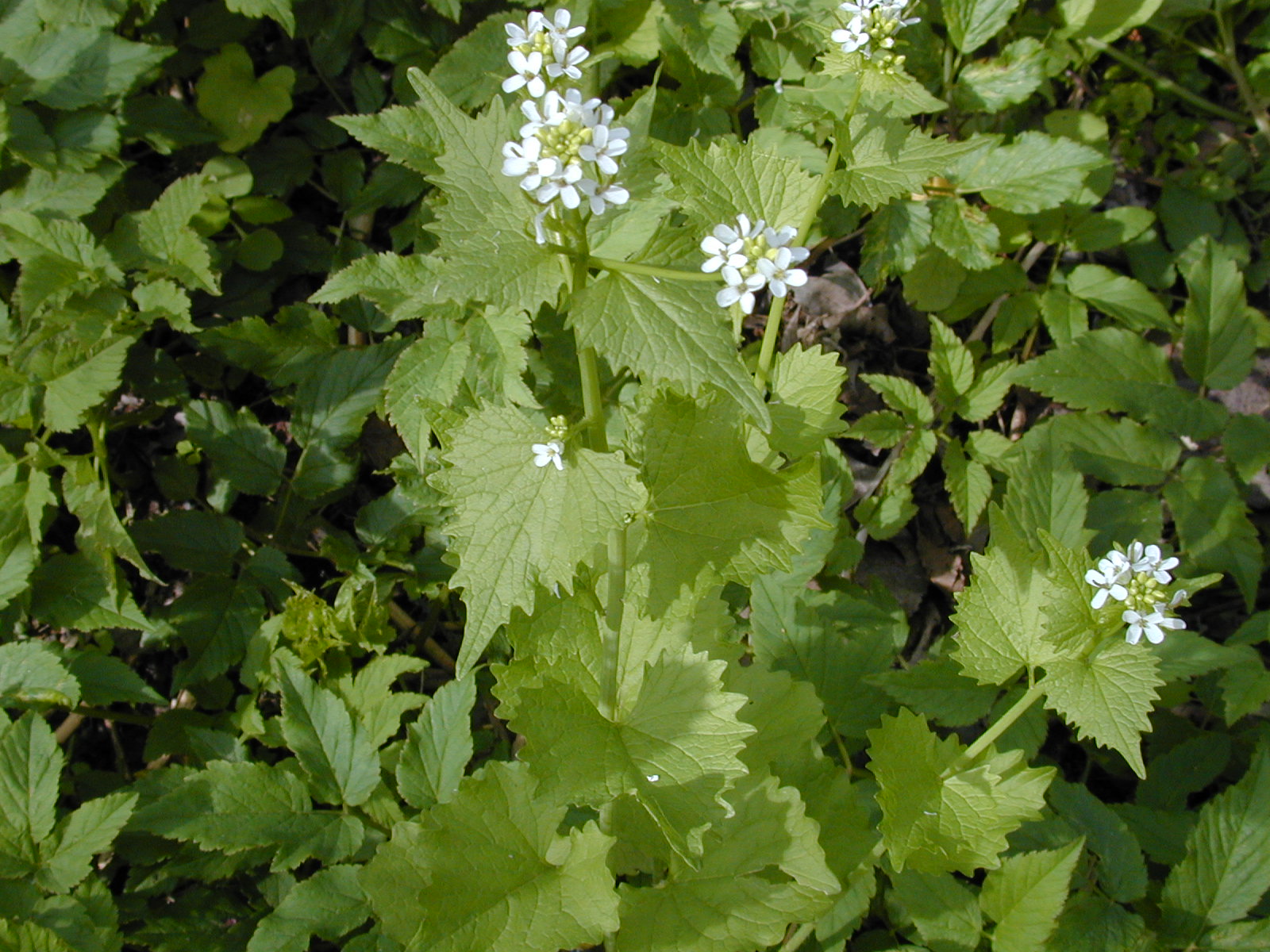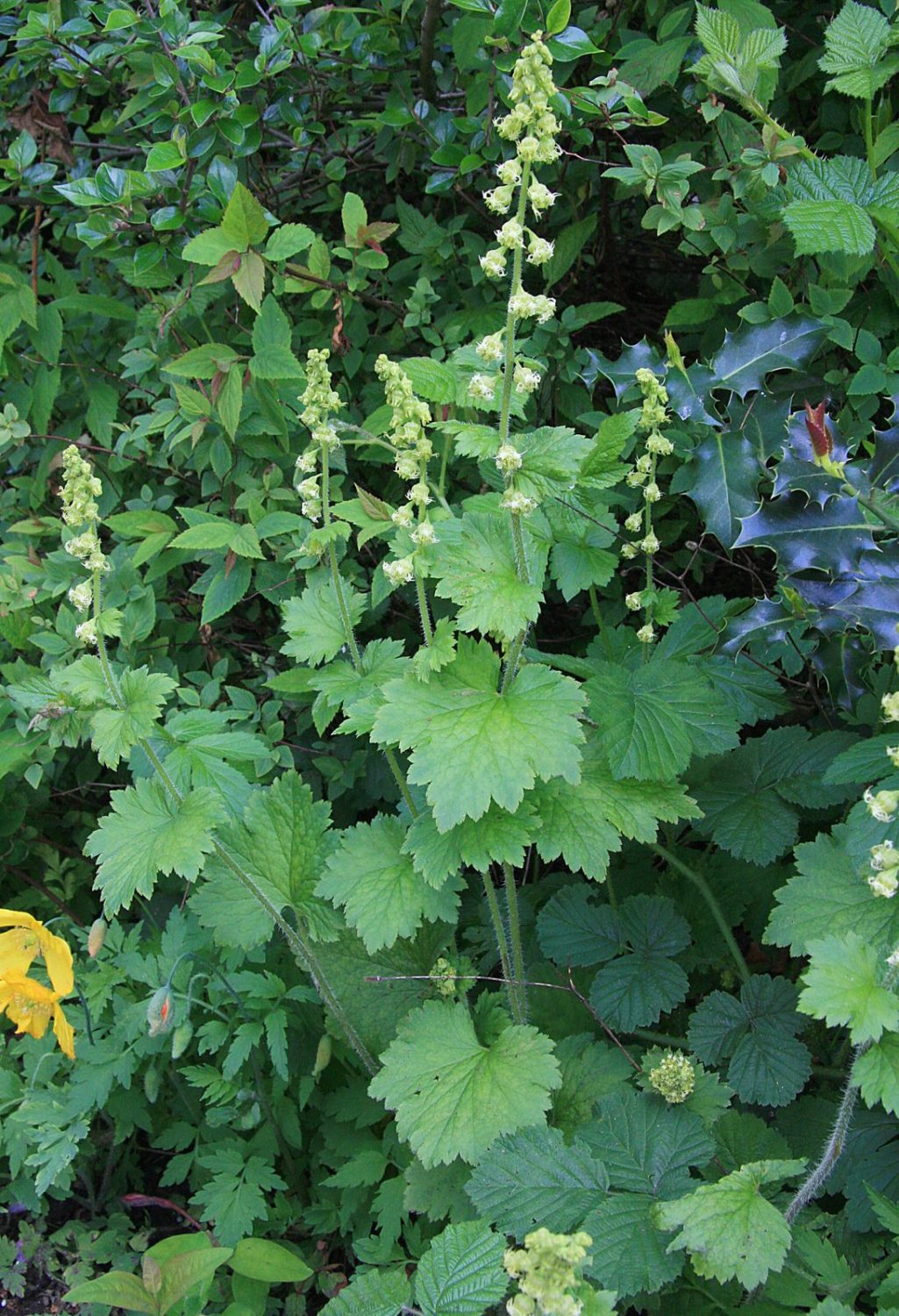Introduced species: Garlic Mustard (Alliaria petiolata)
Characteristics: Garlic mustard is an herbaceous “biennial” (more on that in a minute) with a deep, white taproot. The rosettes, formed in the first year, are short (<20 cm = 8 in), with heart-shaped leaves that produce a distinct garlic odor when crushed. Rosettes will often persist through the winter, then bolt in spring or early summer. The adult (bolting) plants have stalked triangular leaves on stems 1 m (3 ft) tall or more, with clusters of small, white, four-petaled flowers. Abundant seeds are contained in erect, narrow pods (called “siliques”) 4- 5.5 cm (1.5 – 2.5 in) long that form in late spring; these begin to grow brittle and explosive in very late spring or early summer.
While nominally a biennial–producing first-year rosettes, followed by flowering, seed production and senescence in year two–local restoration practitioners (myself included) have seen first-year plants produce flowers and seed, as well as new growth (including flowers and seeds) on plants that seeded previously. Taken together, these indicate the capacity for garlic mustard to function as an annual, biennial, or short-lived (hopefully! Please?!?) perennial in our region.
Spread: Garlic mustard spreads exclusively by seed; each plant produces hundreds of seeds, which may be spread by animals, moving water, or wind. Garlic mustard’s habitat ranges from upland forested communities to riparian floodplain environments. Native to Europe, western Asia and northern Africa, garlic mustard is one of the few herbaceous plants that readily moves into and dominates the understory of forested areas in North America. The plant has no known natural enemies in North America, and is difficult to eradicate once established. Numerous studies have shown that garlic mustard roots produce chemicals that are toxic to other plants, which aids its rapid spread (though there is also research that did not find evidence of this allelopathy). Seeds persist in soil, remaining viable for five years or more (we’re in year 15 of wrestling with this species, so my money’s on “or more”).
Control: The best and most effective control method for garlic mustard is to prevent its initial establishment. This can be done by continued survey and inventory of your property. If you do have it, and it is a minor infestation, manual control or pulling will work great; it’s edible, too, so you can turn that problem into pesto! Mid- to late April is a great time to inspect for this plant, as the conspicuous white flowers are easy to spot; any hand-pulling should be done before late June, when the seed pods start shattering. If the plant is abundant and manual control is out of the question, a chemical application can be effective. However, before applying herbicide one should consult the Oregon Department of Agriculture or the JCWC for proper chemical use and rates and timing of application. Whatever the method, multiple years of control and vigilance will be needed to fully contain this species. If you’re in the Johnson Creek watershed, JCWC can offer assistance in controlling this plant.
Native Replacement: Two native saxifrage species—youth-on-age and fringecup—are easily mistaken for garlic mustard, and make excellent replacements for this woodland aggressor (make sure you’re not pulling up any of these natives—check for the smell!).



